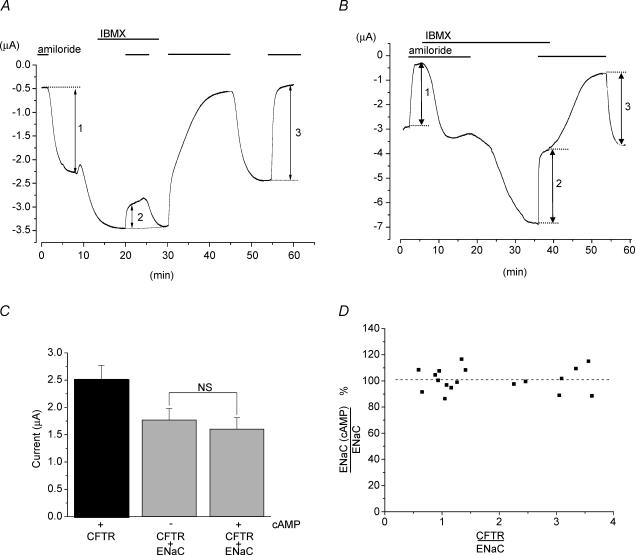Figure 3. Rat ENaC is not regulated by the human CFTR co-expressed in Xenopus oocytes.
A, example of a current trace recorded at −60 mV from an oocyte co-expressing α-, β-and γ-rENaC and hCFTR recorded with a single bath electrode (see Fig. 1; i.e. relatively large Rs of about 6 kΩ; see below). Horizontal lines indicate the application of 10 μm amiloride to block the ENaC or 1 mm IBMX to stimulate the CFTR. Vertical arrows indicate the amplitudes of ENaC-mediated, amiloride-sensitive Na+ current (IENaC) observed before, during and after IBMX stimulation, arrows 1, 2 and 3, respectively. Note that CFTR stimulation, seen as increased inward current during IBMX application, resulted in apparent inhibition of amiloride-sensitive current (compare vertical arrow 2 with 1 or 3). The bath-fluid resistance of the experimental chamber (RC-10, Warner Instruments Co) filled with ND96 solution was ∼4.5 kΩ, the combined resistance of the reference bath electrode and the agar bridge was ∼1.5 kΩ. B, an example of an experiment similar to A, but performed with the virtual ground amplifier connected with two electrodes to the bath to reduce Rs (cf. Fig. 1). No reduction of ENaC current by the CFTR was observed under these conditions; compare the inhibition of ENaC by amiloride in the presence of activated CFTR (arrow 2) with that before (arrow 1) and after CFTR deactivation (arrow 3). C, summary of ENaC-mediated and CFTR-mediated currents measured with low Rs as in B, filled bar, ICFTR; grey bars, IENaC without (left) and with (right) stimulation of the CFTR by IBMX. Oocytes were clamped at the holding potential of −60 mV. The data are means ±s.e.m, n = 23. The observed ENaC current amplitudes were not statistically significantly different (NS) before and after CFTR stimulation. D, effect of activated CFTR on IENaC observed in oocytes expressing different ratios of ICFTR/IENaC. Oocytes were voltage-clamped at −60 mV and stimulated with 1 mm IBMX. The slope of the linear regression fitted to the data points was not significantly different from 0 (P= 0.99, n = 18 oocytes from seven different frogs).

